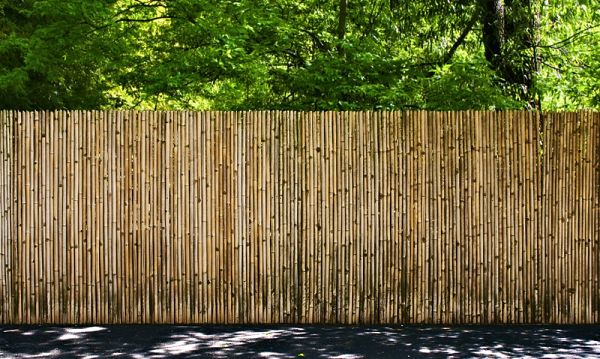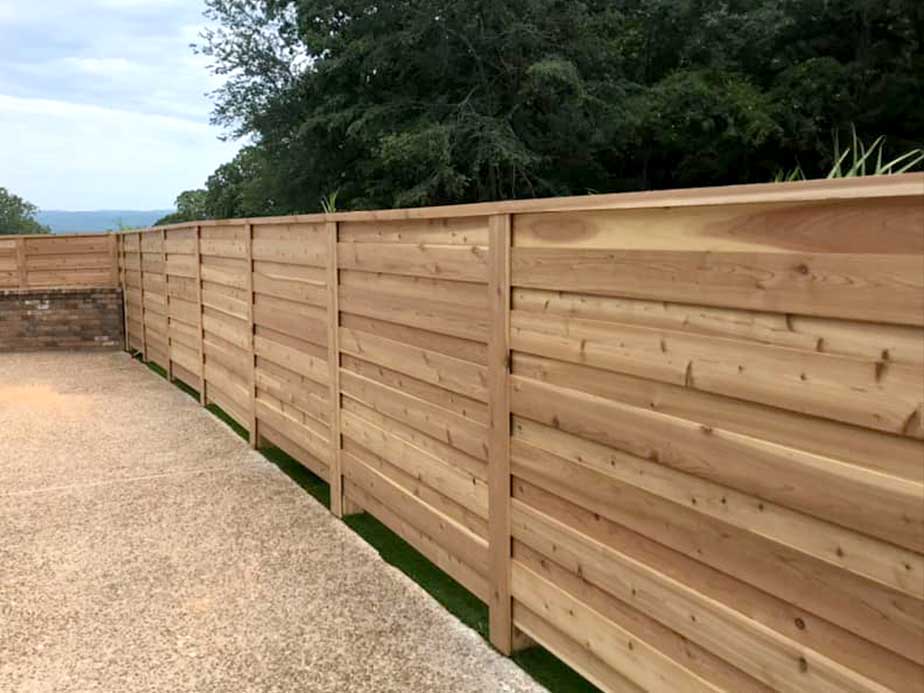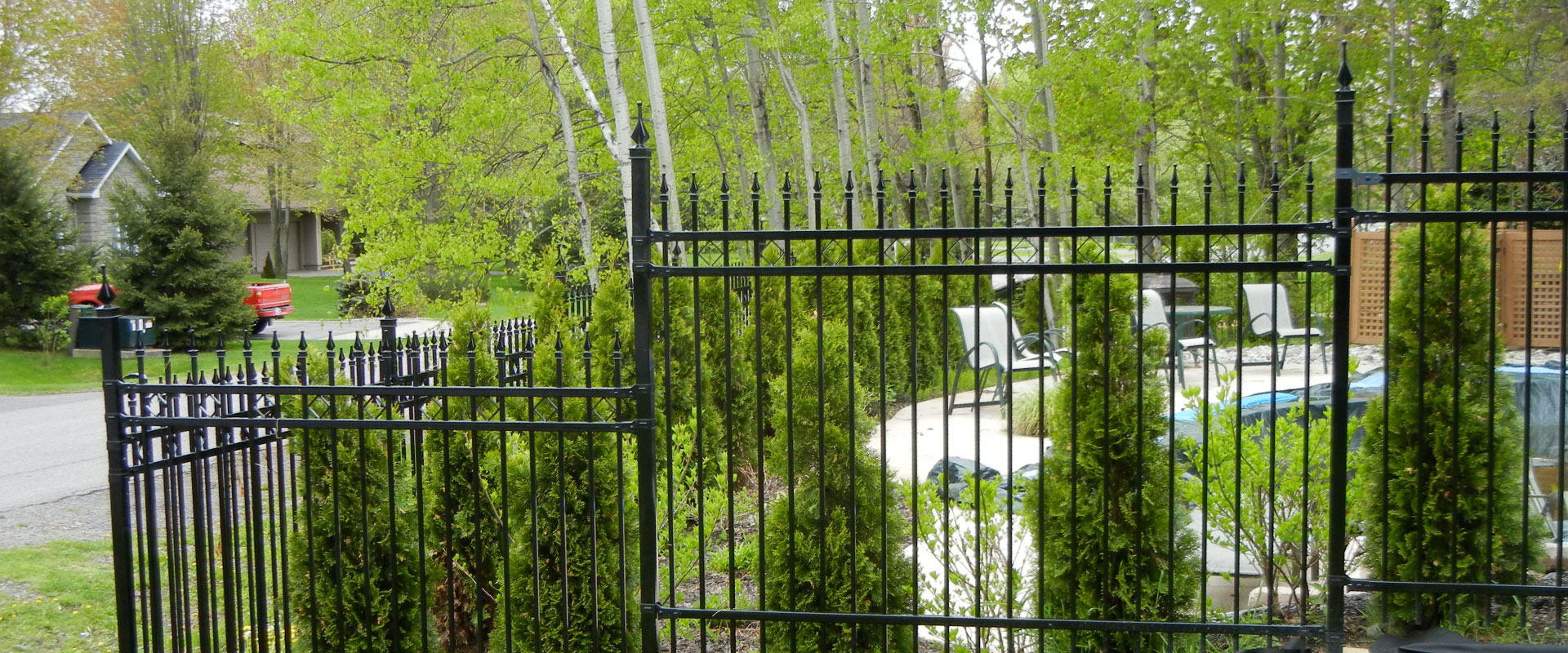All Categories
Featured
From heavy rain and snow to intense sun and wind, weather-related damage is one of the most usual reasons of fence degeneration. While you can't regulate the weather, there are numerous ways to secure your fence from the harmful effects of weather condition and ensure it lasts for years to come.
Wooden Fences: While wood fencings are a timeless choice, they are very susceptible to wetness and parasites. To make a wood fencing extra durable, go with pressure-treated lumber, cedar, or redwood. These products are much more immune to rot and insects. Nevertheless, you'll still need to shield the wood from the aspects with regular maintenance.
Plastic Fences: Vinyl fencings are extremely durable and need little maintenance. They are immune to fading, fracturing, and warping, making them perfect for areas that experience extreme sunlight, rainfall, or cold weather. Vinyl additionally will not rot or draw in insects, using long-lasting protection without the need for constant upkeep.
Metal Fencings: Wrought iron and light weight aluminum fencings are outstanding options for their toughness and resistance to wind and wetness. They are vulnerable to rusting over time, particularly if subjected to constant rainfall or humidity. Go with powder-coated or galvanized steel fences to minimize the danger of corrosion.
![]()
Compound Fences: Combining timber fibers and plastic, composite fences are immune to decomposing, fading, and insect damages. They provide the look of timber with much less maintenance, making them a suitable option for areas with variable weather.
![]()
Wood Fences: A top quality timber sealer or stain is important to secure your fencing from the aspects. Timber sealants obstruct wetness and safeguard against mold and mildew growth. They also avoid UV damage that can create fading and cracking. Make certain to reapply the finishing every couple of years to keep your fence in top problem.
Vinyl Fences: While plastic is low-maintenance, you can still safeguard it further by using a UV protectant. These finishes aid protect against discoloration brought on by long term sun exposure. In addition, utilize vinyl-specific cleaners to maintain the surface devoid of stains or dirt build-up.
Metal Fences: To shield metal fencings from rust and deterioration, think about using a rust-inhibiting primer adhered to by a safety paint created for outdoor use. When possible, powder covering provides a resilient and long-lasting surface that can endure severe climate.
Wooden Fences: Tidy your wooden fencing with a pressure washing machine or a soft fabric and light cleaning agent. Be sure to remove fallen leaves, mold, and dust that can hold moisture against the wood. Inspect the fencing on a regular basis for indications of rot, cracks, or insect invasions. Early discovery can protect against small problems from developing into expensive repair work.
Plastic Fences: Vinyl fences are simple to clean with soap and water. For tougher discolorations, you can make use of a mild bleach service or a plastic cleaner to bring back the fencing's appearance. Don't fail to remember to inspect for any type of fractures that might let water in, leading to further damage.
Steel Fencings: Clean steel fences with a soft fabric to remove dirt, corrosion, and dirt. If you see rust places, remove them right away with a cord brush and deal with the location with a rust-resistant guide or paint to stop it from spreading.
Wood Fences: When installing wooden fence articles, ensure they are established deeply right into the ground, preferably below the frost line to avoid changing throughout freezing temperature levels. Usage concrete to safeguard the posts and prevent them from being or leaning rooted out by strong winds.
Steel Fencings: For steel fences, make sure that the posts are securely secured in concrete. This is particularly crucial in regions with regular tornados or hefty winds. You may likewise wish to mount additional supporting to provide extra assistance versus wind anxiety.
Furthermore, extreme wetness from close-by plants can result in mold and rot in wooden fences, so maintain vegetation at a risk-free range to enable for correct air movement and drainage.
Steel fences must be evaluated for corrosion prior to the winter starts, and any kind of impacted locations should be treated with rust-resistant items. Furthermore, using a layer of paint or safety finishing before the winter embed in can aid protect your fencing from ice and snow damage.
![]()
Final thought. Safeguarding your fencing from weather-related damages calls for a mix of correct product choice, normal upkeep, and aggressive care. Whether you have a wooden, vinyl, metal, or composite fencing, the best protective procedures can prolong its lifespan and keep its appearance. By following these simple yet effective steps, you can guard your fencing against the aspects and maintain it looking wonderful for years ahead.
- Choose Weather-Resistant Materials. Among one of the most efficient methods to shield your fencing is by choosing the ideal material for your environment. Certain products are extra durable and much better matched to hold up against certain weather problems.
Wooden Fences: While wood fencings are a timeless choice, they are very susceptible to wetness and parasites. To make a wood fencing extra durable, go with pressure-treated lumber, cedar, or redwood. These products are much more immune to rot and insects. Nevertheless, you'll still need to shield the wood from the aspects with regular maintenance.
Plastic Fences: Vinyl fencings are extremely durable and need little maintenance. They are immune to fading, fracturing, and warping, making them perfect for areas that experience extreme sunlight, rainfall, or cold weather. Vinyl additionally will not rot or draw in insects, using long-lasting protection without the need for constant upkeep.
Metal Fencings: Wrought iron and light weight aluminum fencings are outstanding options for their toughness and resistance to wind and wetness. They are vulnerable to rusting over time, particularly if subjected to constant rainfall or humidity. Go with powder-coated or galvanized steel fences to minimize the danger of corrosion.

Compound Fences: Combining timber fibers and plastic, composite fences are immune to decomposing, fading, and insect damages. They provide the look of timber with much less maintenance, making them a suitable option for areas with variable weather.
- Apply Safety Coatings. No matter of the product, using safety coverings is critical in expanding the life of your fencing. Coatings create a barrier that shields your fencing from dampness, UV rays, and various other ecological stress factors.

Wood Fences: A top quality timber sealer or stain is important to secure your fencing from the aspects. Timber sealants obstruct wetness and safeguard against mold and mildew growth. They also avoid UV damage that can create fading and cracking. Make certain to reapply the finishing every couple of years to keep your fence in top problem.
Vinyl Fences: While plastic is low-maintenance, you can still safeguard it further by using a UV protectant. These finishes aid protect against discoloration brought on by long term sun exposure. In addition, utilize vinyl-specific cleaners to maintain the surface devoid of stains or dirt build-up.
Metal Fences: To shield metal fencings from rust and deterioration, think about using a rust-inhibiting primer adhered to by a safety paint created for outdoor use. When possible, powder covering provides a resilient and long-lasting surface that can endure severe climate.
- Regular Cleaning and Inspections. Correct cleansing and normal assessments are necessary to keeping the stability of your fence. Build-up of debris, mold, and dirt can trap dampness versus your fencing and create long-lasting damage.
Wooden Fences: Tidy your wooden fencing with a pressure washing machine or a soft fabric and light cleaning agent. Be sure to remove fallen leaves, mold, and dust that can hold moisture against the wood. Inspect the fencing on a regular basis for indications of rot, cracks, or insect invasions. Early discovery can protect against small problems from developing into expensive repair work.
Plastic Fences: Vinyl fences are simple to clean with soap and water. For tougher discolorations, you can make use of a mild bleach service or a plastic cleaner to bring back the fencing's appearance. Don't fail to remember to inspect for any type of fractures that might let water in, leading to further damage.
Steel Fencings: Clean steel fences with a soft fabric to remove dirt, corrosion, and dirt. If you see rust places, remove them right away with a cord brush and deal with the location with a rust-resistant guide or paint to stop it from spreading.
- Reinforce Your Fencing with Appropriate Installment. Proper installation is among the most effective means to stop weather-related damage. A fencing that is improperly installed is more probable to collapse or experience damages during tornados.
Wood Fences: When installing wooden fence articles, ensure they are established deeply right into the ground, preferably below the frost line to avoid changing throughout freezing temperature levels. Usage concrete to safeguard the posts and prevent them from being or leaning rooted out by strong winds.
Steel Fencings: For steel fences, make sure that the posts are securely secured in concrete. This is particularly crucial in regions with regular tornados or hefty winds. You may likewise wish to mount additional supporting to provide extra assistance versus wind anxiety.
- Trim Trees and Shrubs Near Your Fence. Disordered trees and hedges can trigger significant damage to your fencing, specifically during high winds or hefty storms. Tree branches can scratch versus the fencing, triggering scratches, and their roots can undercut the messages. Keep greenery trimmed and ensure that tree branches are not leaning on or near the fence.
Furthermore, extreme wetness from close-by plants can result in mold and rot in wooden fences, so maintain vegetation at a risk-free range to enable for correct air movement and drainage.
- Winterize Your Fence. Take added safety measures to shield your fencing from freezing temperatures, snow, and ice if you live in an area with severe winter seasons. For wooden fencings, ensure the base of the posts rises over ground level to avoid water buildup, which can freeze and fracture the timber. Consider using a moisture obstacle around the base of the blog posts to maintain them completely dry during the winter season.
Steel fences must be evaluated for corrosion prior to the winter starts, and any kind of impacted locations should be treated with rust-resistant items. Furthermore, using a layer of paint or safety finishing before the winter embed in can aid protect your fencing from ice and snow damage.
- Post-Storm Services. Tornados can create immediate damage to your fence, including fallen branches, broken posts, or dislodged panels. After each tornado, check your fence extensively to inspect for any type of visible damages. Address small problems rapidly prior to they end up being bigger, more costly repair services. If your fence has actually been severely harmed, it's a good idea to consult a specialist for repairs to ensure it remains structurally sound.

Final thought. Safeguarding your fencing from weather-related damages calls for a mix of correct product choice, normal upkeep, and aggressive care. Whether you have a wooden, vinyl, metal, or composite fencing, the best protective procedures can prolong its lifespan and keep its appearance. By following these simple yet effective steps, you can guard your fencing against the aspects and maintain it looking wonderful for years ahead.
Latest Posts
Dependable Industrial Roof Solutions by Weathercraft
Published May 26, 25
1 min read
Join Your Financial Partner at WyHy – Top Benefits for Your Future
Published May 20, 25
1 min read
Uncover Cut Costs on Car Maintenance with Montclare Auto Repair’s Limited-Time Deals
Published May 19, 25
1 min read